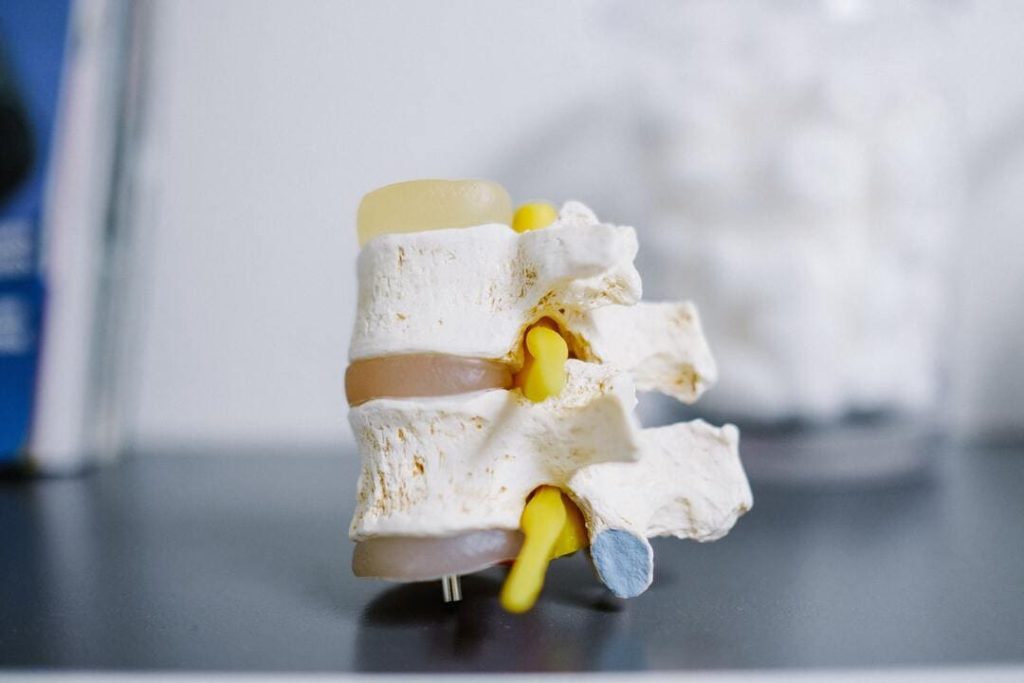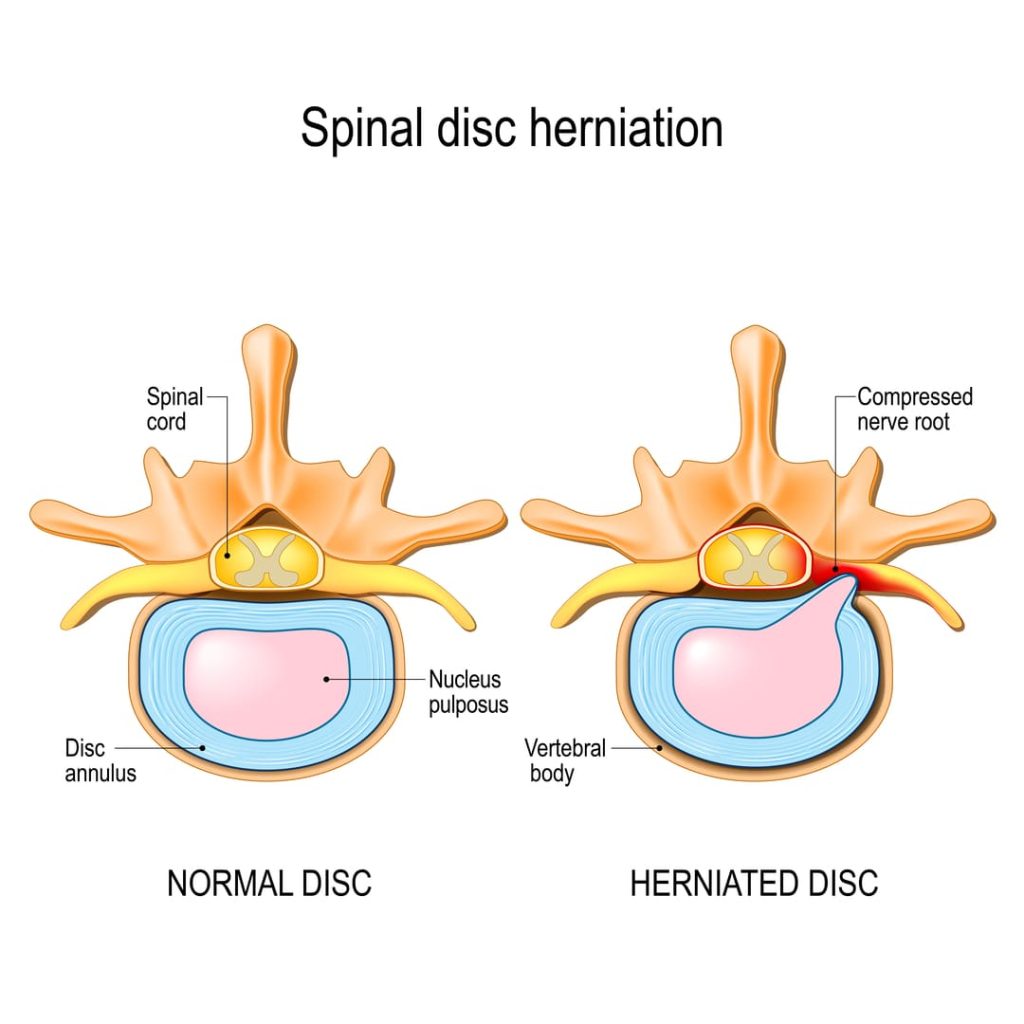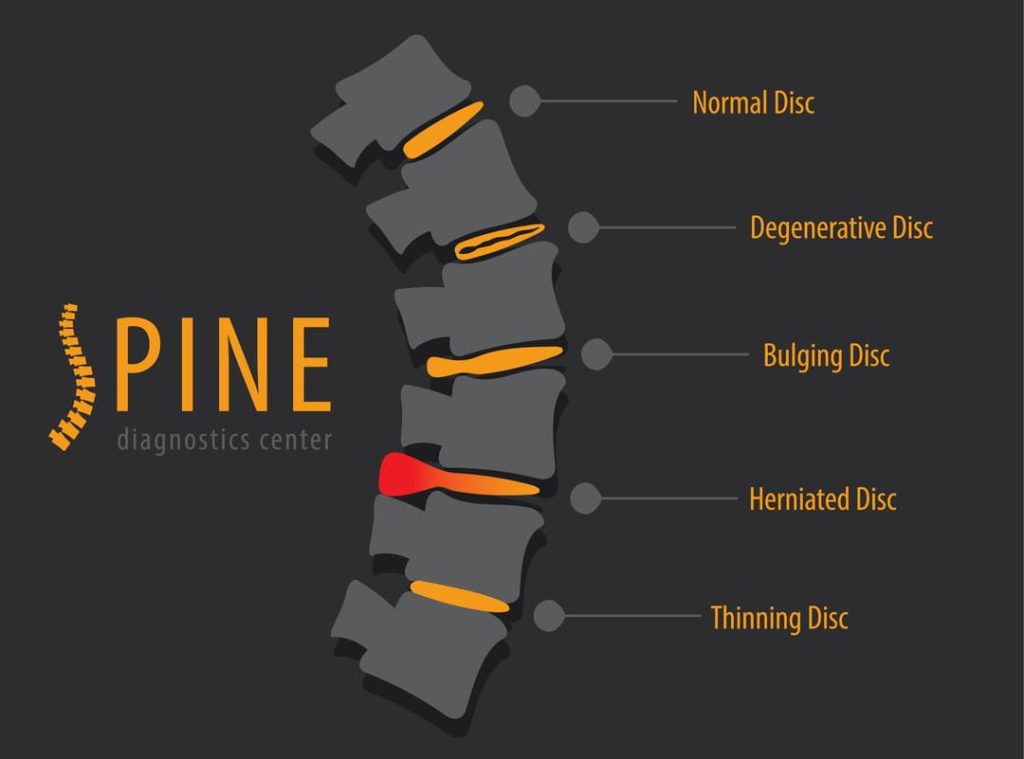Looking for Expert-Level VA Claim Answers?📱Call Us Now! 737-295-2226
If you’re a veteran diagnosed with a herniated disc, you may wonder about your next steps. You may be eligible for a herniated disc VA rating, which could provide financial assistance, healthcare, and other benefits for you and your family.
This ultimate guide discusses the seven things you must know about a herniated disc VA rating. We’ll help to clear up any confusion and help you to understand the process of obtaining a VA disability rating for your herniated disc.

You DESERVE a HIGHER VA rating.
Take advantage of a VA Claim Discovery Call with an experienced Team Member. Learn what you’ve been missing so you can FINALLY get the disability rating and compensation you’ve earned for your service.
1. What is a herniated disc?
A herniated or bulging disc is an injury that impacts your back, specifically your spine. You may also hear a herniated disc called a slipped disc.
Within your spine, disks sit between your vertebrae. The job of your discs is to keep the bones in your spine together while protecting them. The discs act as cushions between the vertebrae, and when these discs become damaged, they can no longer protect the vertebrae effectively.
The outside is made of a tough substance, while the inside is made of a softer, jelly-like substance. When the outside of the disc tears, the inner substance can be squeezed out. This is called a bulging or herniated disc, and the condition can be extremely painful.

2. What causes herniated discs in veterans?
Several things can cause herniated discs in veterans. One common cause is degenerative disc disease. This occurs when the disks in your spine begin to break down and wear out over time with aging. Herniated discs can also be caused by injuries or too much strain on your back, especially relevant for veterans.
Your challenge when filing for a herniated disc VA rating will be to show that your herniated disc is related to your service and not only a result of aging.
Many veterans develop herniated discs because they put too much strain on their backs. For example, they may lift things with their back muscles instead of their leg muscles, which can cause a tear. If you have worked a physically demanding job in the military, you’re more likely to develop a herniated disc or other back problems.

3. Symptoms of a Herniated Disc
The symptoms of a herniated disc will differ from veteran to veteran. For some, the pain is mild and manageable, while others may experience severe pain that limits their ability to function.
There are a few common symptoms associated with a herniated disc, including:
- Numbness or tingling in your arms or legs
- Weakness in your muscles
- Pain that radiates from your back or neck into your arms or legs
- Pain that gets worse when you sit, stand, twist, or cough
The pain may worsen with activity or when you are lying down. Remember that it is possible to have a herniated disc without symptoms.
You should see a doctor immediately if experiencing any of these symptoms. Your doctor can confirm whether or not you have a herniated disc and recommend treatment options. Many times this will involve an MRI to examine your discs. The more you document (especially in service), the easier it will be to win a herniated disc disability rating VA claim.
4. How to Win A Herniated Disc Disability Rating
Once you’ve discovered you have a herniated disc, a diagnosis alone isn’t enough to qualify you for a VA disability rating for a herniated disc. You must show that your military service somehow caused or aggravated your herniated disc. This could be directly or indirectly.
To explain that further, let’s look at service connection.
Service Connection and Herniated Discs
Your herniated disc must be service-connected to qualify for a VA rating. Service connection occurs when an injury or illness is incurred during military service or when your service aggravates a pre-existing condition. There are several different ways to establish service connection for a herniated disc:
- Direct Service Connection – This is when there is a clear link between your herniated disc and your military service. An example would be if you had a back injury while lifting a heavy object while on active duty, which caused your herniated disc.
- Secondary service connection – If another injury or illness caused by service connection eventually leads to your herniated disc.
Diagnosis of a herniated disc during your time in service is the easiest way to service-connect your condition. If you entered service with a herniated disc, you might be able to show that your service worsened your condition (especially if you went to see the doctor and documented how your condition got worse while you were serving).
If you developed a herniated disc (or were first diagnosed with a herniated disc) after you left military service, you could have more difficulty getting the VA to grant your condition service connection unless another service-connected condition later caused your herniated disc.
If you can establish you began having back problems while in the military but didn’t receive a correct diagnosis until later when you left service, this is one way you can support service connection.
You must show that your herniated disk was at least as likely as not caused or aggravated by an in-service event or injury. A nexus letter written by a doctor supporting this claim is crucial in many cases for getting your VA claim approved.
To improve your chances of earning a bulging or herniated disc VA rating, file a fully developed claim the first time.
5. Learn how the VA Assigns a Herniated Disc VA Rating
The VA could assign you a herniated disc disability rating from 10% to 100%.
The VA uses Diagnostic Codes (DCs) to rate disabilities. These codes guide the VA on how to rate your disability at a certain percentage level based on specific symptoms.
The VA uses two different Diagnostic Codes to rate herniated discs:
- DC 5243 – Intervertebral disc disease syndrome (IVDS)
- DC 5242 – Degenerative arthritis of the spine
Based on these diagnostic codes, there are two ways the VA determines your disability percentage rating. One method uses range of motion limitations. The more limited your ability to move your back, the higher the VA rating. The other method assigns a rating based on the number of incapacitating episodes you experience based on your herniated disc.
IVDS is rated based on “incapacitating episodes.” An incapacitating episode is when a veteran is prescribed bed rest by their doctor. Here is how the VA rates those episodes for herniated discs:
- 10% – You’ve experienced at least one week of incapacitating episodes in the past year.
- 20% – You’ve experienced at least two weeks of incapacitating episodes in the past year.
- 40% – You’ve experienced at least four weeks of incapacitating episodes in the past year.
- 60% – You’ve experienced at least six weeks of incapacitating episodes in the past year.
Range of motion limitations are rated from 10% to 100%:
- 10% – Forward flexion of the thoracolumbar spine greater than 60 degrees but not greater than 85 degrees; or, forward flexion of the cervical spine greater than 30 degrees but not greater than 40 degrees; or, combined range of motion of the thoracolumbar spine greater than 120 degrees but not greater than 235 degrees; or, combined range of motion of the cervical spine greater than 170 degrees but not greater than 335 degrees; or, muscle spasm, guarding, or localized tenderness not resulting in abnormal gait or abnormal spinal contour; or, vertebral body fracture with loss of 50 percent or more of the height.
- 20% – Forward flexion of the thoracolumbar spine greater than 30 degrees but not greater than 60 degrees; or, forward flexion of the cervical spine greater than 15 degrees but not greater than 30 degrees; or, the combined range of motion of the thoracolumbar spine not greater than 120 degrees; or, the combined range of motion of the cervical spine not greater than 170 degrees; or, muscle spasm or guarding severe enough to result in an abnormal gait or abnormal spinal contour such as scoliosis, reversed lordosis, or abnormal kyphosis.
- 30% – Forward flexion of the cervical spine 15 degrees or less; or, favorable ankylosis of the entire cervical spine.
- 40% – Unfavorable ankylosis of the entire cervical spine; or, forward flexion of the thoracolumbar spine 30 degrees or less; or, favorable ankylosis of the entire thoracolumbar spine.
- 50% – Unfavorable ankylosis of the entire thoracolumbar spine.
- 100% – Unfavorable ankylosis of the entire spine.

The rating formula is based on the VA’s range of motion chart, so it’s important to ensure that your doctor measures range of motion accurately.
If you have compression or irritation of the nearby nerve root, the VA will rate you using whichever method (range of motion or incapacitating episodes) offers the higher rating. Usually, doctors acknowledge you have nerve irritation if you’re dealing with back pain or sciatica.
In our article on being awarded a back pain VA rating, you can learn more about how your doctor can properly measure your range of motion.
6. Be Honest at your VA Exam for a Herniated Disc
You can expect a few things if you have a Compensation and Pension (C&P) exam for your herniated disc disability rating. The doctor will be considering which rating method to use during your evaluation. The doctor will likely ask you questions to see if you have incapacitating episodes and determine your range of motion. You may have to bend and twist in multiple directions during the exam.
Make sure you don’t push through the pain for these range of motion tests. Stop when you begin to feel discomfort. Many veterans tend to downplay symptoms. It’s critical to be open and honest with your evaluator during your C&P exam to get the rating you deserve.
Here are more tips for your C&P exam.
7. Other Considerations for a Herniated Disc
The VA will consider a few other things when rating your herniated disc.
If your herniated or bulging disc prevents you from working, you can also apply for Total Disability Individual Unemployability (TDIU). TDIU is a benefit that allows veterans to receive 100% disability compensation even if they aren’t technically rated at 100%.
Once your herniated disc is service-connected, the VA will also consider whether your herniated disc has caused any secondary conditions. For example, a herniated disc in your lower back could cause many conditions, including sciatica and multiple sclerosis.
You served; you deserve! If you’re struggling with a herniated disc, make sure you apply for the VA benefits you earned. Our team of expert veteran coaches is here to help make sure you get the compensation you deserve. Contact us today if you have questions about a herniated disc VA rating or any other disability.

NEED MORE ASSISTANCE?
Most veterans are underrated for their disabilities and therefore not getting the compensation they’re due. At VA Claims Insider, we help you understand and take control of the claims process, so you can get the rating and compensation you’re owed by law.
Our process takes the guesswork out of filing a VA disability claim and supports you every step of the way in building a fully-developed claim (FDC)—so you can increase your rating FAST! If you’ve filed your VA disability claim and have been denied or have received a low rating—or you’re unsure how to get started—reach out to us! Take advantage of a FREE VA Claim Discovery Call. Learn what you’ve been missing—so you can FINALLY get the disability rating and compensation YOU DESERVE!

Trisha Penrod
Trisha Penrod is a former active-duty Air Force officer. As an Intelligence Officer, she led teams of analysts to apply advanced analytic skills to identify, assess, and report potential threats to U.S. forces.
Trisha attended the U.S. Air Force Academy and holds an MBA from Webster University. After receiving an honorable discharge in 2018, Trisha worked as a growth marketer and utilizes her analytic skills to help others accomplish their business goals.



